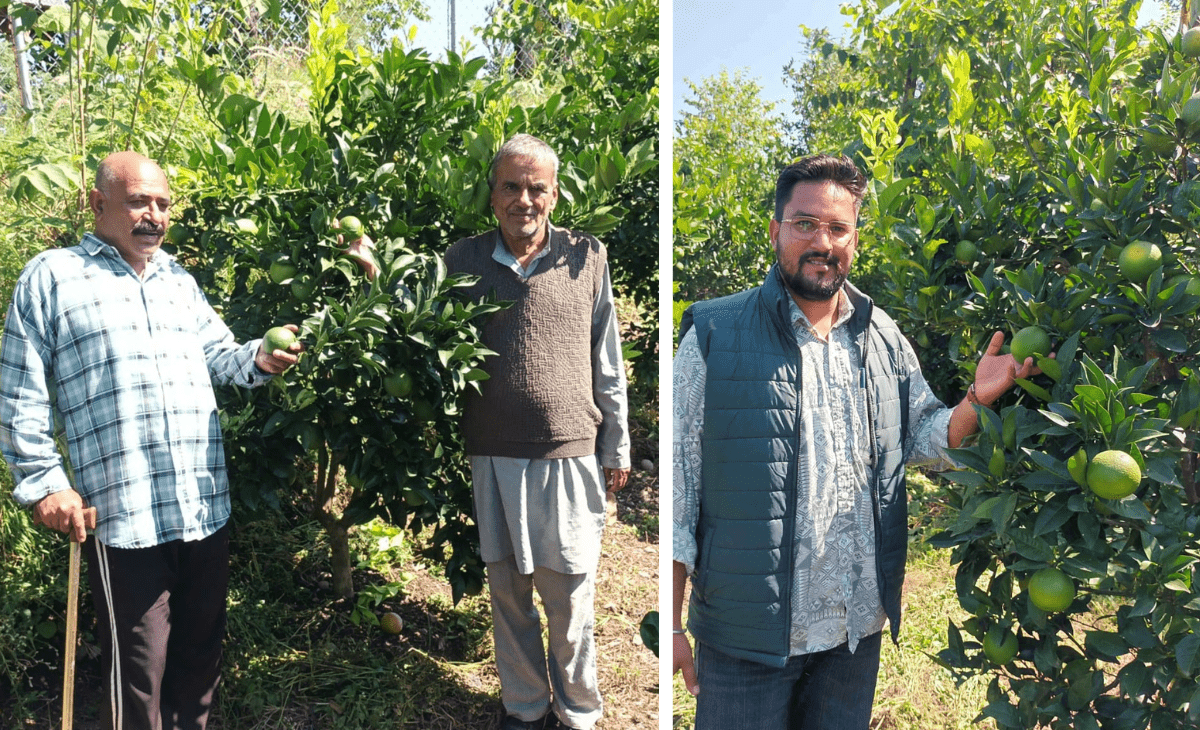Producing high-quality fruit, fetching them Rs 40 per kg in market
Munish Sood
MANDI: From struggling to make ends meet to sending their produce to major retail stores, farmers in the Lalana cluster of Dharampur subdivision in Mandi district of Himachal Pradesh are scripting a story of transformation.
Once dependent solely on rain-fed crops, 41 families have now turned their once-barren fields into lush, fruit-laden mosambi (sweet lime) orchards, giving a new identity to rural farming in Himachal Pradesh.
A few years ago, most of these farmers could barely sustain their households through small-scale farming.
The uneven terrain and lack of irrigation left their lands dry and unproductive. But today, the same slopes are alive with rows of mosambi trees, a result of determination, innovation and community effort.
“We never imagined our land could yield like this. When we first started planting mosambi, people doubted it would survive in our conditions. But we believed in the idea and now the orchards are our pride,” says Amar Singh, vice-president of the Community Horticulture Production and Marketing Association of Lalana cluster.
Nearly 4,700 saplings of Blood Red and Jaffa varieties of mosambi were planted across about five hectares of land. Today, Amar Singh and his fellow farmers are expecting between 50 and 60 kg of fruit per tree, marking their most successful harvest yet.
Golden fruits reach market
The sweet lime produced here is already catching attention beyond district borders. The first 20 quintals of mosambi harvested from Lalana were recently supplied to Reliance Fresh stores in Rajpura, Punjab. The fruit’s thin skin, high juice content and sweetness have made it a market favourite, fetching Rs 35 to 40 per kg, a rate that has significantly boosted farmers’ income.
“This is the first time our fruit has reached organised retail markets. Earlier, we had no means to sell outside the local mandis. Now we earn fair prices and recognition for our produce,” says Ramesh Chand, another farmer from the cluster.
With improved irrigation, solar fencing, and scientific farming practices, these farmers have not only secured their livelihoods but have also inspired others in nearby villages to follow suit.
Community effort behind success
The strength of this initiative lies in collective participation. Farmers of the Lalana cluster have come together under the Community Horticulture Production and Marketing Association and Water Users Association, ensuring that every member benefits equally. The associations help manage irrigation systems, coordinate market linkages and maintain transparency in operations.
Under this model, 63 horticulture clusters have been formed across the Dharampur subdivision, covering about 250 hectares and benefiting nearly 1,500 farmers. These clusters promote fruits such as mosambi, guava and litchi — crops well-suited for the subtropical conditions of lower Himachal.
According to Dr Anil Thakur, Subject Matter Specialist (Horticulture) in Dharampur, the transformation became possible through modern irrigation, soil management and training support.
“Earlier, the land here depended on rain, but now with solar-powered lift irrigation, drip systems, and proper planning, the output has multiplied. We’ve created 50,000-litre storage tanks, developed soil beds and provided regular field guidance to the farmers. The results speak for themselves,” he explains.
The success of Lalana’s citrus growers is part of a broader initiative supported by the Himachal Pradesh government, which has prioritised horticulture as a key driver of rural prosperity. Under the HP Subtropical Horticulture, Irrigation and Value Addition Project (HP Shiva Project), the government has earmarked Rs 100 crore for 2025-26, focusing on developing irrigation networks, expanding fruit cultivation and improving market access in lower hill regions.





